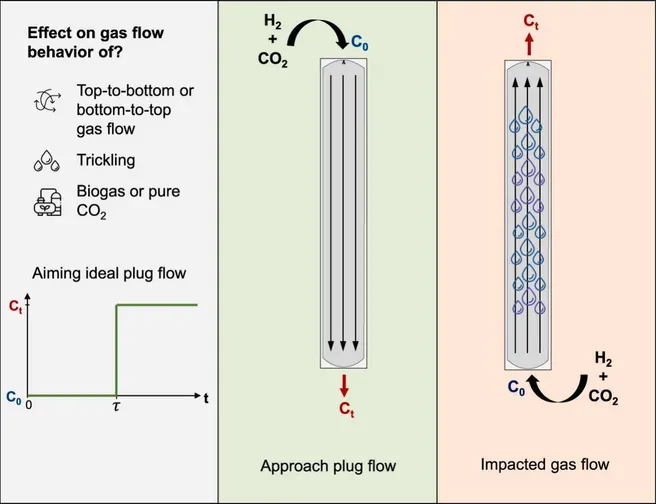Biological methanation of H2 and CO2 is a potential energy conversion technology that can support the energy transition based on renewable sources. The methanation performance in trickle bed reactors can be improved by approaching the gas flow through the reactor towards plug flow. Through preliminary gas flow experiments without biological conversion, this study investigated operational and constructional conditions that enhance plug flow in a pilot-scale trickle bed reactor with 1 m3 gas volume. An improved gas flow was observed when the feed gas was applied in a top-to-bottom direction and when the process liquid was not trickled through the packing bed. Furthermore, the gas flow experiments identified reactor-specific properties, such as unused or dead volumes. Applying gas flow experiments prior to reactor start-up is recommended as a simple and convenient method to identify individual reactor properties and optimization potentials for higher methanation performance.
